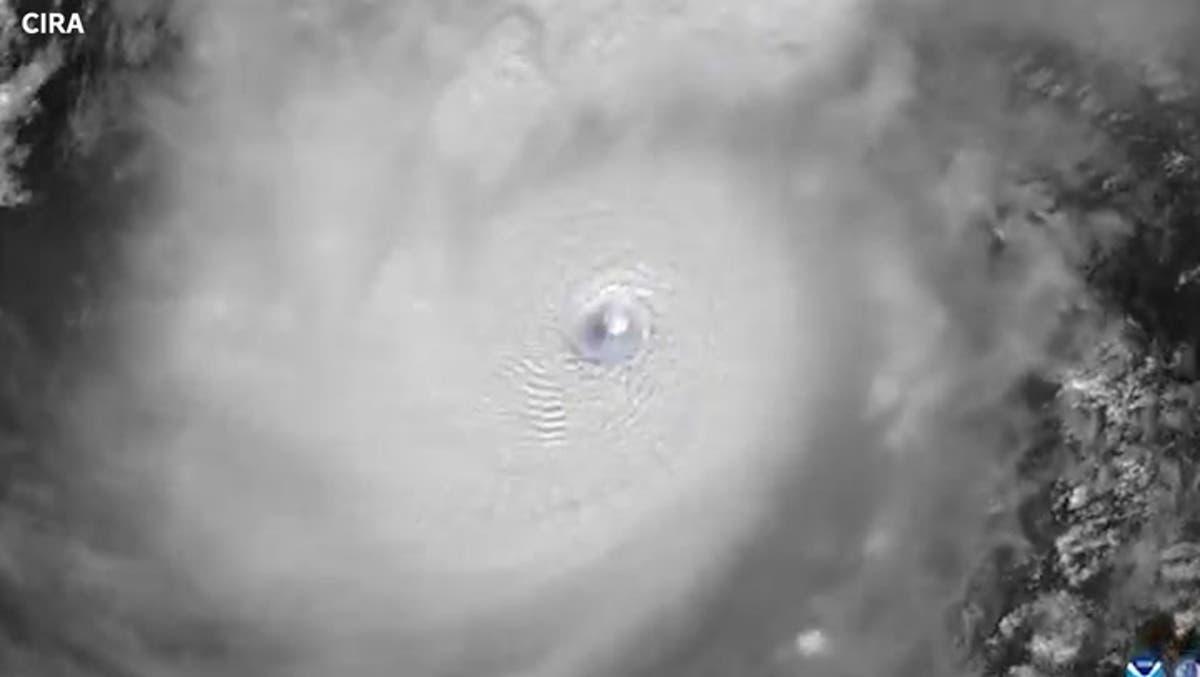Hurricane Milton’s rapid intensification to a Category 5 storm has shocked forecasters, but it is just the latest in a series of storms so extreme that the current hurricane scale may no longer fully capture their severity.
The potential “once in a lifetime” storm rapidly intensified from a Category 1 to a Category 5 hurricane in a matter of a few hours.
The National Hurricane Center has warned that Milton may gain more strength and grow in size, posing “even more danger” as it looks to make landfall in Florida by Wednesday evening, slamming into the densely populated Tampa Bay.
Follow our live coverage of Hurricane Milton.
According to AccuWeather lead hurricane expert Alex DaSilva, “the ocean heat content is at the highest level on record for this time of year in the Gulf of Mexico,” providing Milton with the “rocket fuel” to intensify.
Florida officials have issued stark warnings to residents to prepare for one of the largest evacuations in recent years.
Tampa mayor Jane Castor told CNN that if residents choose to “stay in one of those evacuation areas, you’re gonna die”.
The storm comes just a few days after Hurricane Helene, another “historic” storm caused massive losses in the southeastern US, including Florida, where cleanup is still ongoing.
Helene, which devastated parts of the Sunshine State almost two weeks ago, was a “wake-up call”, Ms Castor said, adding that Milton could be “literally catastrophic”.
Rapid intensification of storms has become the norm in recent years. This is prompting some scientists to question whether another classification – Category 6 – should be introduced for the most intense hurricanes that are becoming more frequent due to the climate crisis.
How are hurricanes categorised?
For more than 50 years, the National Hurricane Center has used the Saffir-Simpson Windscale to communicate the risk of tropical storms.
- Category 1: 74-95mph
- Category 2: 96-110mph
- Category 3: 111-129mph
- Category 4: 130-156mph
- Category 5: 157mph or higher
The last, Category 5, is open-ended. Any storm with wind speeds above 157mph falls in this category. However, several storms in recent years have been reaching increasingly higher upper limits.
In a study published earlier this year, researchers said that increasingly intense hurricanes, fueled by warming ocean waters, could warrant a Category 6, reserved for storms with sustained winds over 192 mph.
Why do we need a Category 6?
Climate experts Michael Wehner and Jim Kossin have argued that hurricanes have grown more powerful in recent decades, fueled by warmer ocean waters.
“The open-endedness of the Saffir-Simpson scale can lead to underestimation of risk, particularly as this underestimation becomes increasingly problematic in a warming world,” Dr Wehner said.
Their study found that at least five storms since 1980, including Typhoon Haiyan and Hurricane Patricia, which surpassed 192mph, could have been categorised as Category 6.

“Anthropogenic global warming has significantly increased surface ocean and tropospheric air temperatures in regions where hurricanes form, providing additional heat energy for storm intensification,” the study said.
However, further rise in global temperatures could lead to more storms like Helene and Milton and create the need for having another category in the classification.
According to the study by Mr Wehner and Mr Kossin, the frequency of storms capable of reaching Category 6 wind speeds could increase by 50 per cent near the Philippines and double in the Gulf of Mexico under a 2C warming scenario. With 4C warming, an extreme yet likely scenario, the risks could triple in the gulf.
Though the National Hurricane Center hasn’t proposed adding a Category 6, researchers believe it is important to reassess how hurricanes are categorised. Millions of people depend on the scale’s categorisation to assess the risk from storms.
But experts also warn that focusing solely on wind speeds may overshadow the broader dangers of storms, such as storm surges and inland flooding, which can cause severe damage even after a storm is downgraded.

